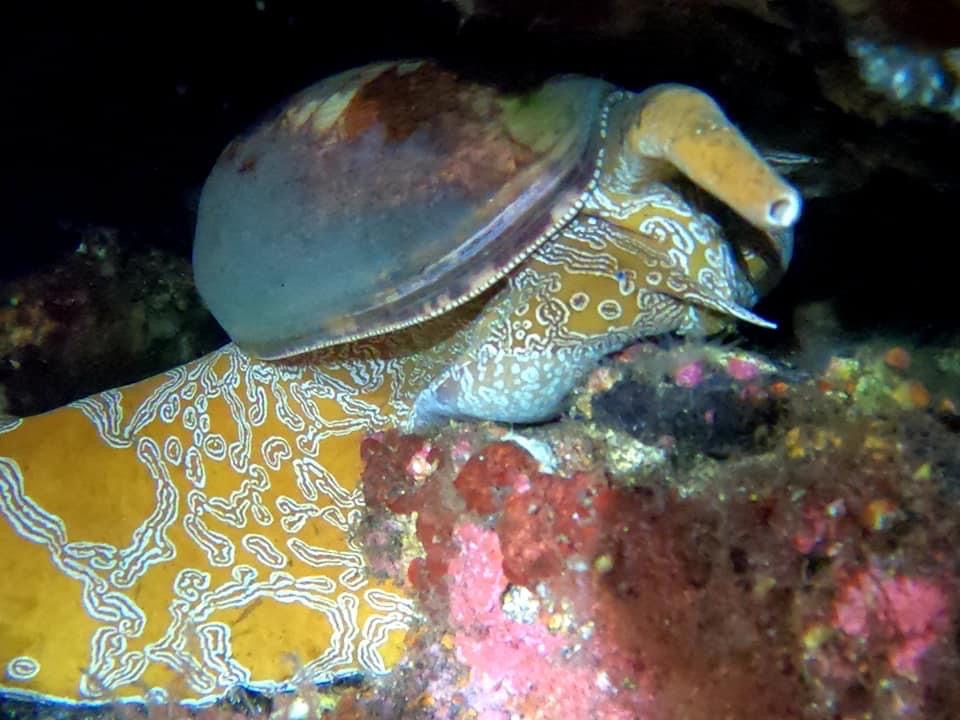Southern Bailer
Melo miltonis
The southern bailer is a member of the family Volutidae, and is the largest shelled mollusc to occur on the southern coast with a height of up to 45 centimetres. The southern bailer is easily recognised by the large brown foot with an intricate patterning of cream lines. The bailers, both the northern and southern species, were given the name by early Europeans who observed indigenous people ‘bailing’ water out of their canoes. Their shells were highly valued by Aborigines for use storing and holding water.
The southern bailer generally remains buried under sand during the day, emerging at night to feed. As active predators they glide over the sandy surface with the proboscis extended foraging for other molluscs, including scallops, triton and turban shellfish which they envelop with their large fleshy foot. Females of this species lay a large mass of translucent sponge-like egg capsules containing over 100 developing shells, which are attached to firm structures such as coral, rock and other dead shells. They lack a planktonic larval stage, instead developing directly into crawling juveniles. This lack of dispersion leads to a limited geographic range and thus locally distinct populations where individuals interbreed among themselves and often exhibit distinctive patterns on their shells.
The southern bailer occurs in seagrass, sand and reef habitats, from very shallow areas to depths of 40 metres. Their distribution ranges from the Houtman Abrolhos Islands to South Australia.
Occurrence at the Busselton Jetty:
As the southern bailer is generally a nocturnal animal, remaining concealed by sand during the day, they are an uncommon sight from the underwater observatory. They have, on occasion, been observed by divers crawling over the sandy bottom with their large foot and siphon extended and a large mature individual provided a spectacular sight climbing up an observatory window.
Image by: S. Daniels
